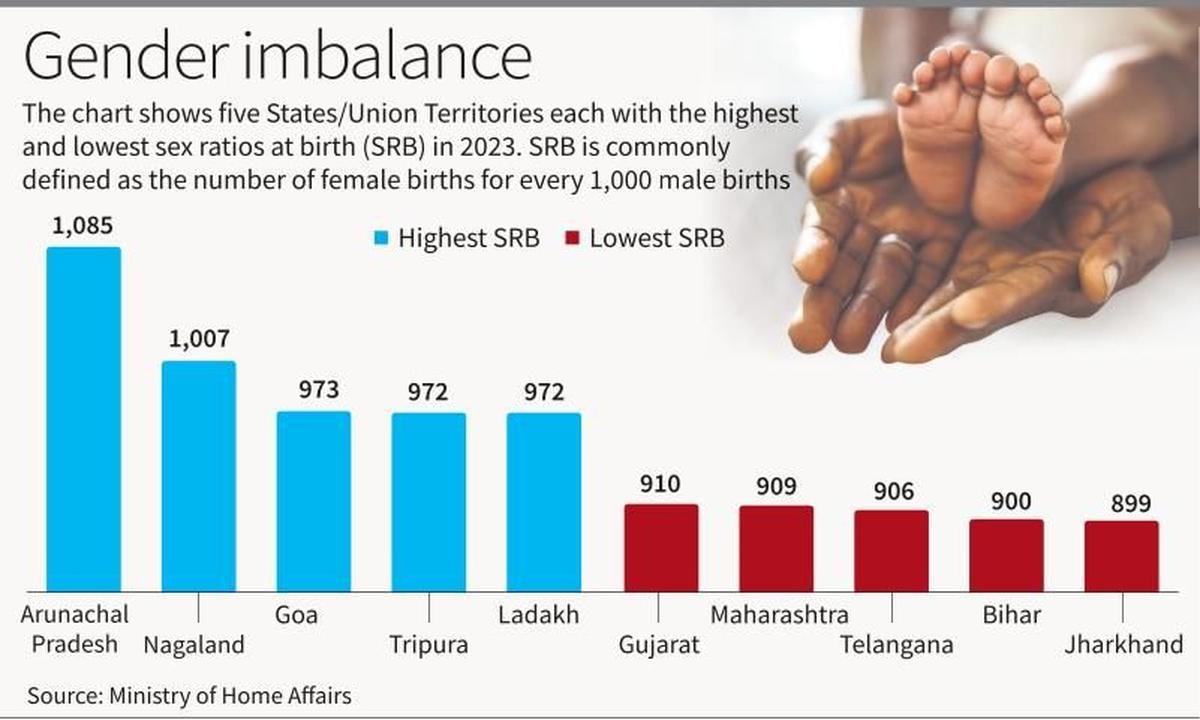Context:
The Registrar General of India (RGI) recently released the Vital Statistics of India (2023) based on the Civil Registration System (CRS) report. The Civil Registration System (CRS) is a continuous, permanent, and compulsory recording of vital events such as births and deaths under the Registration of Births and Deaths Act, 1969.
Key Highlights:
|
Indicator |
Value / Trend |
Notes / Observations |
|
Registered Births |
2.52 crore |
About 2.32 lakh fewer than in 2022 |
|
Registered Deaths |
86.6 lakh |
Marginal increase from 86.5 lakh in 2022 |
|
Birth Registration Coverage |
98.4 % |
Close to complete; indicates robust registration system |
|
Institutional Births |
74.7 % |
~ three‑quarters of registered births occurred in institutions |
|
Sex Ratio at Birth (SRB) |
Lowest: Jharkhand (899); Bihar (900) Highest: Arunachal Pradesh (1,085), Nagaland (1,007) |
Persistent regional disparities in gender balance at birth |
|
Timely Registration (within 21 days) |
11 States/UTs > 90 % |
Gujarat, Tamil Nadu, Goa, Punjab, etc. |
|
5 States 80–90 % |
Odisha, Mizoram, Maharashtra, Chhattisgarh, Andhra Pradesh |
|
|
14 States 50–80 % |
Many large states lag behind, e.g. Uttar Pradesh, Bihar, West Bengal |
Analysis and Observations:
· India’s Ongoing Demographic Transition: The decline in registered births reflects India’s slow but steady movement toward population stabilization, influenced by urbanization, rising education levels, and better access to contraception.
· Health System & Institutional Deliveries: A high percentage of institutional births indicates improved access to healthcare, yet gaps in certain states suggest continued efforts are needed to reduce maternal and child mortality.
· Gender Bias and Societal Challenges: Persistently low sex ratios at birth in several states underscore the prevalence of gender-biased sex selection. It signals the need for stricter enforcement of the PCPNDT Act and deeper social reform initiatives.
Policy Implications:
· Strengthen digital platforms to ensure seamless data entry and avoid glitches
· Enhance awareness campaigns at grassroots levels, especially in rural areas
· Link CRS data with health and welfare programs to identify vulnerable populations
· State-specific strategies to improve SRB and reduce under-registration
· Ensure mandatory medical certification of causes of death to aid health policy planning
Conclusion:
The CRS 2023 report is a critical tool for understanding India's demographic and health landscape. While the country has made commendable progress in registration coverage, challenges remain in ensuring timeliness, data quality, and gender equity. Bridging state-level disparities and strengthening institutional capacity are essential to make the civil registration system not just a bureaucratic exercise, but a foundation for evidence-based governance and inclusive development.







